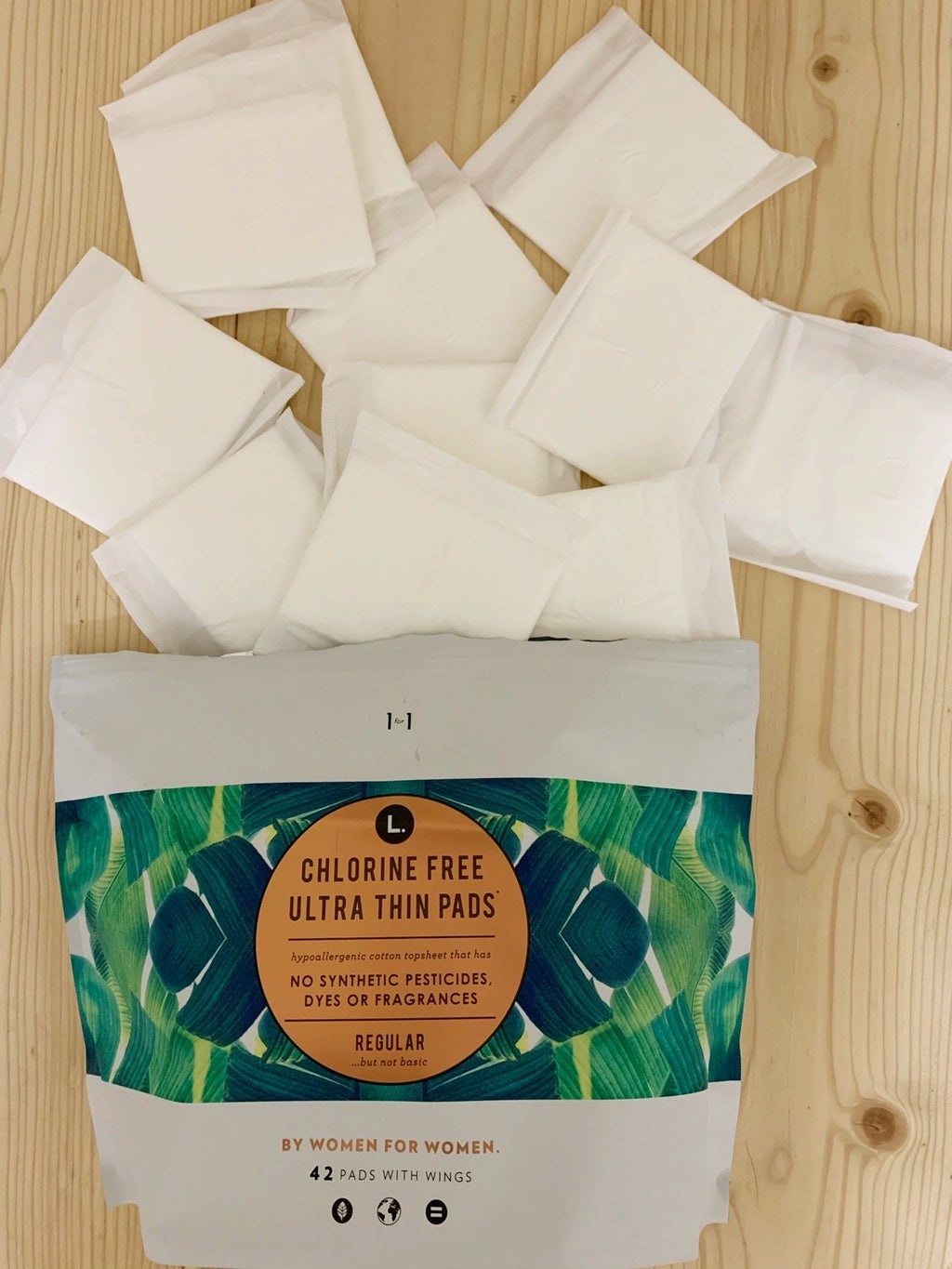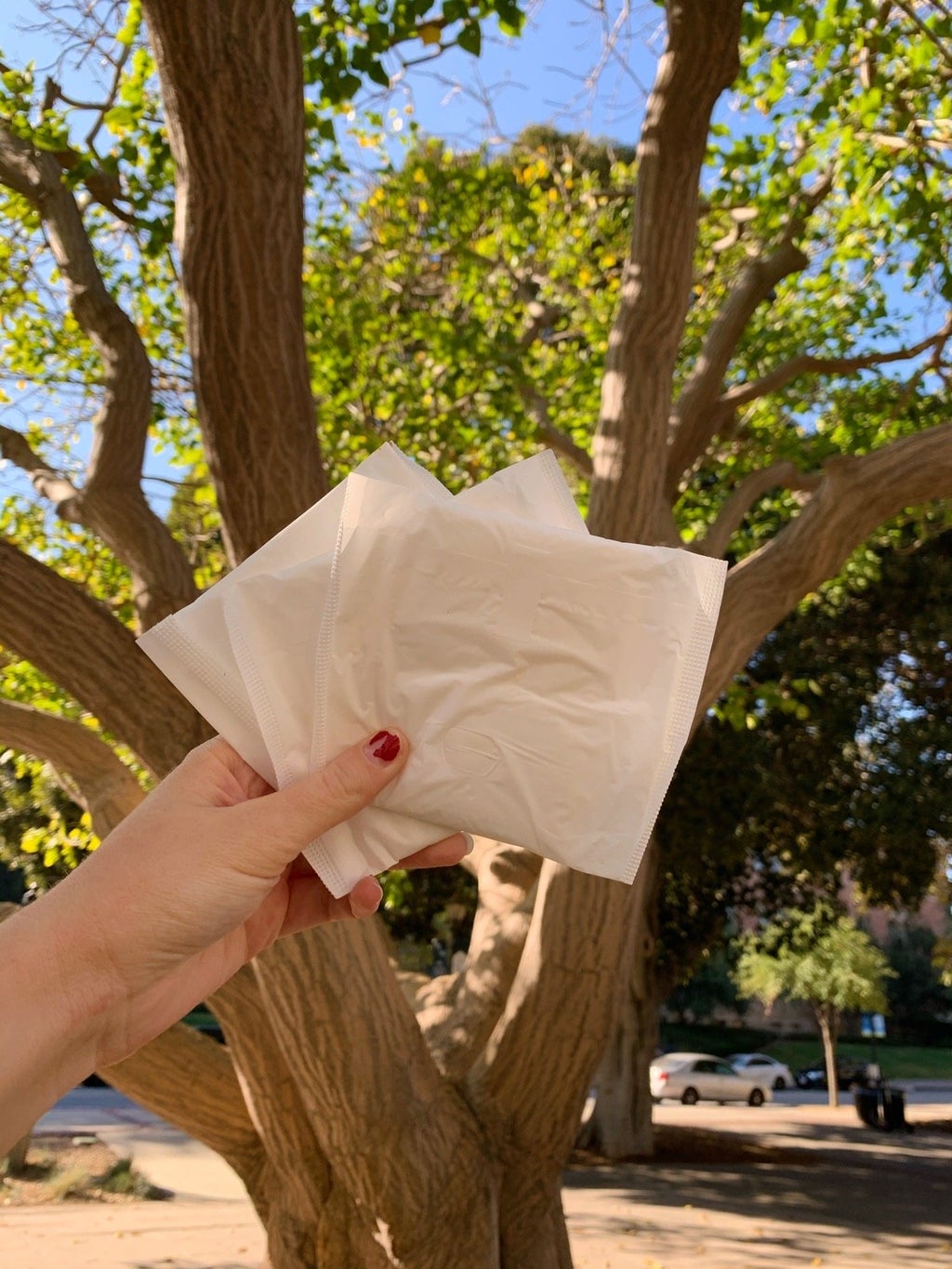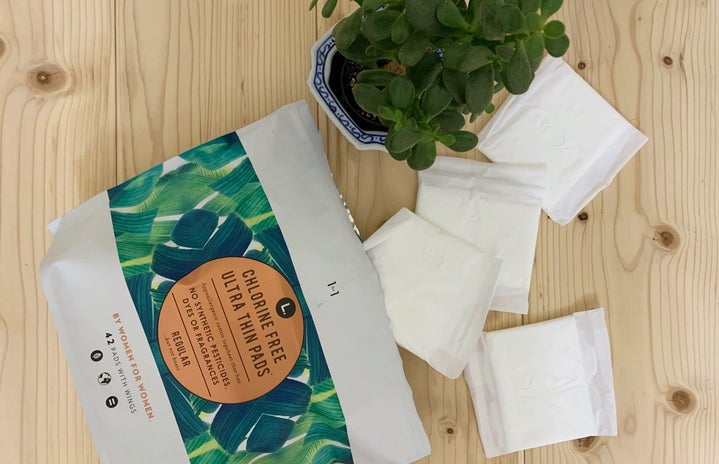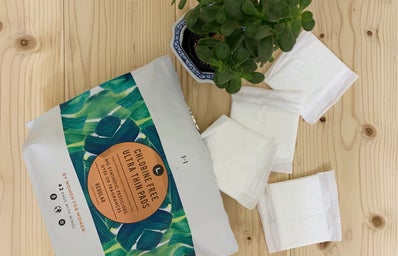As per usual, I was doing my monthly pad shopping at Target, but this time I noticed something new. Instead of the aisles being lined with all the familiar brands, there was a display for natural, organic pads. I wondered what made them different from the ones I had been buying for my period for years, especially considering that I never had thought about my pads being organic or not. I picked up the unfamiliar pad package. It was from the brand L., and it read that these pads were chlorine free, made of cotton, hypoallergenic and had no synthetic pesticides, dyes or fragrances. My immediate thoughts were, “Have I been poisoning myself?! Were the pads that I have been using for forever full of chlorine, synthetic pesticides, dye and fragrance?” Without hesitation, I purchased them.

Prior to that moment, all I knew about pads was that fragrance-free ones were the way to go. My mom and older sister told me that in general, keeping fragranced products away from the vagina is best, so I trusted their advice. Still, I needed to research and know more than that. I found that according to the statements made by OB-GYN Dr. Sherry Ross on USA Today, organic cotton pads and tampons are actually not any safer or better than the normal, synthetic ones. So, I was not poisoning myself for years. That was comforting.
However, the fact of the matter is that the vagina is incredibly sensitive, and it needs to be treated with the upmost care. As someone who with eczema and easily irritated skin in general, it made sense for me to be using cotton pads. My skin would be able to breathe better with them, and that was important to me.

After starting to use these natural pads, I noted a couple different things. First of all, my pad felt a lot more wet during the day, and I overall noticed my menstruation more because of it. It did not feel as absorbent, but after looking further into cotton pads, it made sense. According to Nannocare, most synthetic pads are perforated, and this allows them to absorb liquid faster. Cotton cannot be perforated that way, so the pads are not going to feel as dry.
Nevertheless, I was able to combat that by switching my pad out more often. In fact, this frequent switching made me feel fresher, especially because I found these cotton pads to be so soft. Additionally, they did not make my cramps any better or my period shorter like some have been claiming. It was all normal business in that regard.
Furthermore, after realizing that there is plastic in the synthetic pads that I have been using, I started to consider the environmental impacts that these feminine hygiene products can have on the planet. Pads are a disposable product, and that certainly adds up. According to HuffPost, synthetic pads can take centuries to break down. Since they are made of plastic, it means that damaging fossil fuels are needed in the manufacturing process. While cotton pads need to decompose as well, it does not take nearly as long, and they do not require the same fossil fuel use.
Even though cotton pads are not as sustainable as menstrual cups, period underwear or reusable sanitary napkins, they are a step in the right direction for the environment. This small change could make a huge impact on the planet, so I am happy to be a cotton pad user. Overall, once I got the hang of using these cotton pads, I really enjoyed them during my period, and I cannot imagine going back. It is all about preference, but the cotton makes sense for my skin type, and they are less harsh on the planet. I definitely recommend the organic natural pad life- it is worth giving a try!




